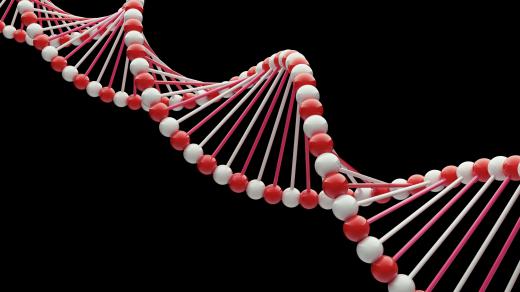What is Genetic Genealogy?
Genetic genealogy applies science to traditional genealogy. Although the work of genealogy has been made easier with computers and microfilm, it once consisted of hours of tedious research through stacks of documents and records. When a genealogist reached a dead end, there was nowhere else to turn. Now, with the help of genetic genealogy, researchers have a way to trace their family tree by linking markers in their deoxyribonucleic acid (DNA). A genetic marker is an easily identifiable sequence in a person’s DNA.
Genetic genealogy experts say that basically 100% of everyone living today have descended from someone royal. A surprising 80% of the current population of Great Britain are descendants of Edward III. With genetic genealogy, simple “commoners” have the ability to link this interesting heritage with their own family trees.

On the genealogist’s side, the process is simple. A company such as Family Tree DNA sells the subject either a Y-DNA test, which traces the paternal line, or an mtDNA test, which traces the maternal line. The genetic genealogy test consists of a simple cheek scraping, from which the DNA is extracted. A scientist can then identify certain markers to help determine the probability that certain people share a common ancestor.

The genetic genealogy tests, which range from 129 to 289 US dollars (USD) can give a varied range of results. The tests are available in 12-, 25- or 37-marker tests, the 37-marker test being the most accurate. This test can determine a common ancestor up to 29 generations back. The results are collected in a database to help link family trees, although they are kept highly confidential.
Family Tree DNA has a surname based family tree and can help subjects identify Native American ancestry, Jewish ancestry and a family’s immigration pattern. The test can also identify people with the same markers that define the family of Aaron, a character in the bible.
The Genographic Project, which is a collaboration between National Geographic magazine, IBM, Waitt Family Foundation and Family Tree DNA, is creating a map of how humans spread out and populated the continents from a common location in Africa. The goal of the project is to identify the markers of indigenous people by testing the local population and running tests on DNA extracted from ancient remains. Because the people being tested have stayed in a particular place, it is understood that they will have the most ancient genetic markers in their DNA. Once the markers have been identified, the public throughout the world can participate. The subsequent findings will show how the markers were carried throughout the world.
In order to participate, those interested in genetic genealogy, or “deep ancestry” as it is called in this case, can purchase a Genographic Project Public Participation Test for 100 USD. It not only helps the worldwide effort, but will give the participant a personalized report of his or her family’s migratory history. Genetic genealogy can be utilized for a purpose as simple as establishing a link between two suspected cousins in order to fill in family trees, or it can help identify how your deep ancestry brought you to where you are today.
AS FEATURED ON:
AS FEATURED ON:












Discuss this Article
Post your comments